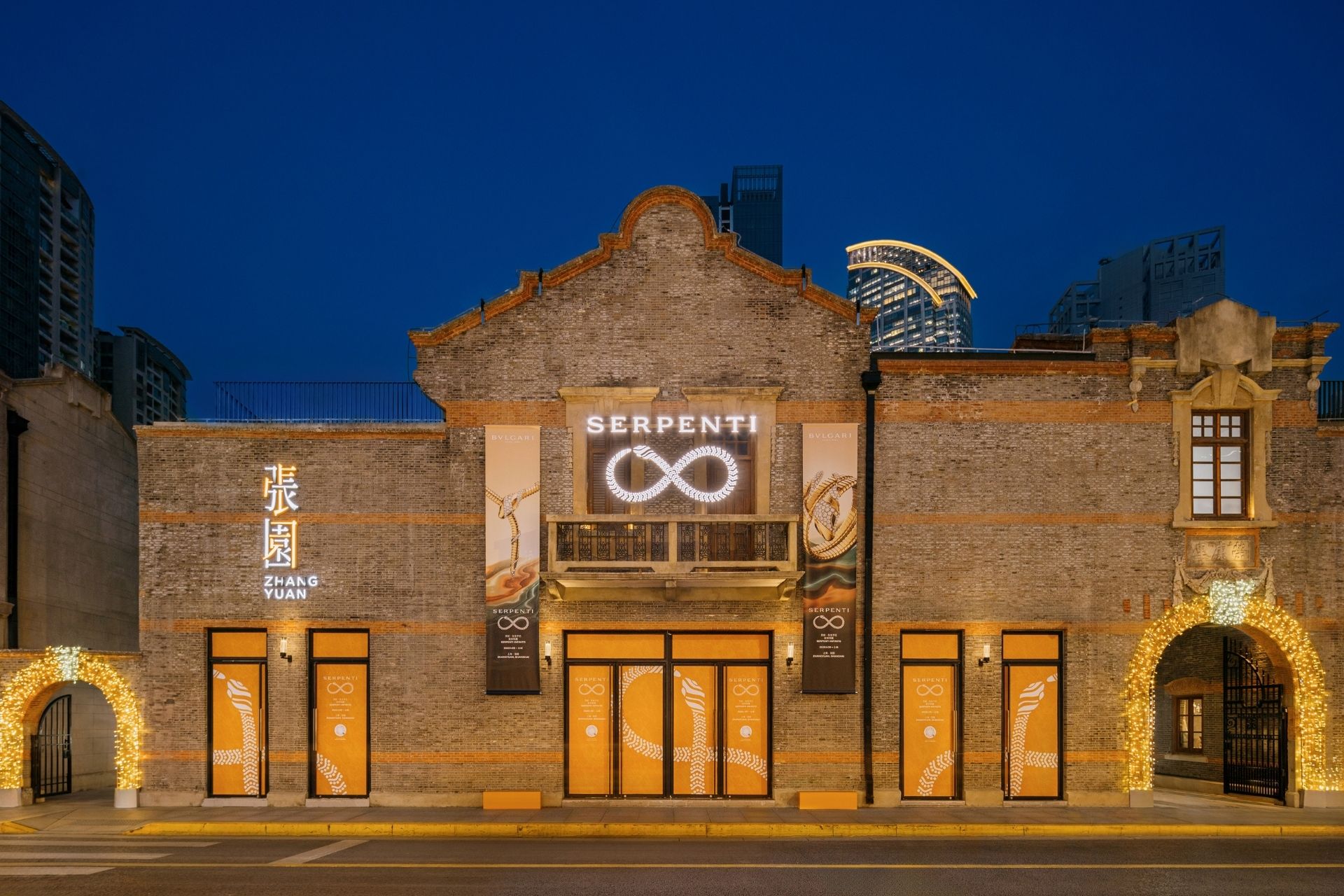As the iPad 2 gets ready to launch, we investigate the most innovative uses of the original iPad by luxury brands, examining the strongest in each sector

As the iPad 2 gets ready to launch, we investigate the most innovative uses of the original iPad by luxury brands, examining the strongest in each sector
The iPad not only changed the landscape of publishing, advertising and multimedia, but also revolutionised the way luxury brands engage their clients, provide customer service and enhance brand experience. Just eleven months after Apple released the first generation, selling three million in the first 80 days, its second-generation tablet device is about to be launched with a host of new features.
The next model is 33% thinner and up to 15% lighter than the original, a dual-core A5 chip means faster graphics and processing, but with the same battery life. As to be expected from Apple, we are looking forward to the launch of a smaller, smarter and more powerful device.
“ tablet sales are expected to reach an estimated 43.6 million units worldwide this year ”
Most interestingly for luxury brands, Apple have equipped the iPad 2 with a back-and front-facing camera and made a feature of its Facetime technology, launched with the iPhone 4. For luxury brands this represents the opportunity to incorporate augmented reality into their iPad offering, as many have chose to use for iPhone applications, and to also communicate with customers face-to-face.
eMarketer estimates that Apple will sell 34 million iPad’s worldwide in 2011, up from more than 15 million in 2010. Overall tablet sales are expected to reach an estimated 43.6 million units worldwide this year, up from just 15.7 million in 2010 (Luxury Daily). As the new product launches this week in the United States, Luxury Society rounded up some of the more innovative uses of the iPad within various sectors of the industry.

Burberry used iPad’s in-store during its Spring Summer 2011 runway show, to allow VIP customers to view the collection and immediately order pieces from the catwalk
Fashion & Accessories
Initially the weapon of choice for fashion publishers (Vogue) and luxury retailers (Net-a-Porter), the iPad proved to be the perfect medium for translating glossy magazines into digital realities.
Initially brands followed the route of publishing houses, updating their loyal magazine offering to include behind the scenes content, interactivity, special features and links to company websites or stores. Realising the popularity and potential of this canvas, brands began developing applications to showcase collections and product ranges, and to communicate brand values and heritage. Gucci and Stella McCartney took the next step and released applications full of bespoke content: interviews with designers, creative directors, city guides, music recommendations and other peripheral interest inclusions, designed to fully engage the new digitally-driven consumer.
But being a matter of digital, Burberry had to take it one step further still, incorporating the iPad in the viewing and ordering of its Spring Summer 2011 collection. The brand invited VIP’s to 25 flagship stores worldwide, where they could watch a livestream of the Spring Summer 2011 runway show in London, and afterwards shop any of the looks using an iPad application developed specifically for the event. iPad’s were of course presented in a Burberry iPad case. Chief executive officer Angela Ahrendts called it ‘retail theatre’ and remarked that it was ‘at the heart of [Burberry’s] retail growth strategy’.

The Plaza New York recently installed iPad’s in every room, replacing the typical hotel guide and allowing guests to control their room and communicate with staff using Intelity’s ICE software
Travel & Hospitality
London’s Berkley hotel may have been one of the first to offer an iPad in every room, but it was the St. Regis New York, and eventually the InterContinental that integrated the iPad with its concierge service, even offering city guide style tips to non-guests.
The St Regis E-Butler application allows guests, and the public alike, access to the hotel’s butlers and concierges, where they are able to “chat” directly with butlers in real-time. The hotel also collaborated with a number of New York’s biggest personalities to share their favourite shops, restaurants and city landmarks, providing an insider’s guide to the city, alongside a calendar of events. The app then allows users to book these spots directly.
But it was New York’s famed Plaza hotel that offered guests the most integrated proposition: an iPad in every room, a bespoke concierge application and finally, the ability to control all aspects of their room through the central device. Plaza iPad’s come loaded with Intelity’s ICE (Interactive Customer Experience) software, which allows guests to order room service, request wake-up calls, adjust lighting and temperature and browse New York city guides. As well as providing all necessary hotel information and a welcome video to guests.

The Savant System for iPad allows users to manage iTunes multimedia content, security cameras, entertainment and ecosystem, from one central device within their homes
Real Estate
In a similar vein to that of Intelity’s Interactive Customer Experience software, luxury home enthusiasts can now control every aspect of their residence using The Savant home automation System. Security, lighting, climate, motorised window shades, home theatre, audio and Internet activity are just some of the functions that can be integrated into the system, managed by a combination of in-wall and wireless iPad, iPod and iPhone devices. It has been described as the industry’s only “Apple to Apple” product.
Because of it’s application to standard devices, the cost efficiencies, when compared to developing bespoke panels for home automation control, are as significant as up to 50 percent. “Besides, who doesn’t love playing with an iPad?” remarked Jon Summer, president of CyberSound, the business handling mass installation of the technology in Arizona’s Scotsdale luxury community. Each house in the development will incorporate one in-wall iPad in the kitchen, one in-wall iPod Touch in the master bedroom, and a concealed seven-foot hardware rack containing a Mac OS X operating system and audio/stereo components.

Range Rover recently announced the iPad as a standard feature of the Autobiography Ultimate limited edition model
Automotive
The luxury automotive sector is another at the forefront of embracing iPad technology. Numerous manufacturers seized the opportunity to update print magazine offerings, and enhance sales value by linking consumers to the nearest showroom or even allow them to book a test drive.
Then iPad’s began replacing the humble sales brochure in showrooms, where instead dealerships demonstrated the features and benefits of various vehicles using the interactivity and high-resolution graphics inherent to the device. Some even made all product range specifications available as a free application within iTunes, as consumers looked more and more to the Internet for pre-sales information.
From here utilisation naturally progressed to include the car manual, where manufacturers like Lexus and Hyundai chose to offer such hefty information in digital form, effectively giving away an iPad with the purchase of a luxury sedan. Hyundai’s offering was developed as an application, designed not just to make the owner’s manual informative, but interactive: complete with a photo and video gallery, the ability to locate a nearby dealer, schedule a service appointment, and links to Hyundai’s retail website.
And whilst BMW may have been the first manufacturer to offer integration, it was Range Rover’s recent launch of the limited edition Autobiography Ultimate that was the first vehicle to incorporate the iPad, as a standard part of the entertainment system. The front seatbacks of this limited edition Range Rover flaunt Apple’s portable tablet devices, where the encased iPad’s flip open for passengers who want to watch movies or surf the Internet during commutes. The tablets of course are also removal for private use.

Clinique’s iPad Skin Diagnostic Tool, capable of providing 180,000 possible product recommendations, planned for installation in 1,300 locations by 2012
Beauty & Wellbeing
With the rise of the information age and e-commerce, consumers can now choose whether not to engage sales consultants and retail stores.In a luxury retail environment, often referred to as ‘daunting’, it is an industry ripe for clients to thoroughly research their purchases online and have them delivered to their door. In an effort to engage this independent but information hungry consumer, retailers have been using the iPad in-store, to act as a silent salesperson: reactive and interactive to the client’s needs, attributes and preferences. A natural fit for information heavy industries, like beauty & wellbeing.
Exclusively for the retail floor, Clinique have developed the iPad Skin Diagnostic Tool, to offer boutique customers’ comprehensive advice and information regarding Clinique products. By answering questions about individual skin conditions, the iPad tool is designed to produce a personal analysis for consumers, providing 180,000 possible product recommendations. Clinique is planning to roll out the iPad devices to 1,300 doors globally by the end of the year, starting in North America, in the handful of pilot stores Clinique have reported sales increases of up to 30 percent.

Christie’s On the Go Hub allows potential bidders to view sales and lots from around the world, uses geo-location software to find the nearest Christie’s house and presents full-motion video of Christie’s representatives explaining the highlights of upcoming sales
Yachting, Auctions & Aviation
Whilst not as prolifically embraced as other industries, yachting, auctions and aviation are emerging categories for innovative iPad use. Superyacht manufacturer Lurssen created the 60m German superyacht ‘Solemates’ in 2010, whose onboard functions can be fully controlled by an iPad. Alongside onboard entertainment, climate and lighting, guests can also summons crewmembers to bring canapés and refreshments.
Then there are luxury auction houses like Sotheby’s and Christies, who have developed iPad applications for potential buyers and voyeurs alike. The Sotheby’s application allows users to browse current and upcoming auctions, view items and log-in to Sotheby’s.com accounts to place absentee bids. Christies have developed a more comprehensive application, allowing users to view full-motion videos of Christie’s specialists explaining upcoming sale highlights, they can view sales and lots for any Christie’s auction globally and receive real-time auction results. However both houses stop short of offering the ability to bid on auctions live.
Finally, private jet charter company Executive Jet Management has received US FAA approval, to use an Apple iPad application as an alternative to paper aeronautical maps. They worked alongside software developer Jeppsen, to gain FAA authorisation through an intensive three-month in-flight evaluation, including a successful rapid decompression test on the iPad to 51,000ft (15,555m).
So whilst the industry continues to progress and champion new ways of utilising a revolutionary piece of technology, the relationship between the iPad and the luxury industry is far from mature. With the launch of the iPad 2 we expect even bigger and more ambitious things.
For the Luxury Society monthly round-up of new digital projects by luxury brands please visit The Latest section of our editorial








